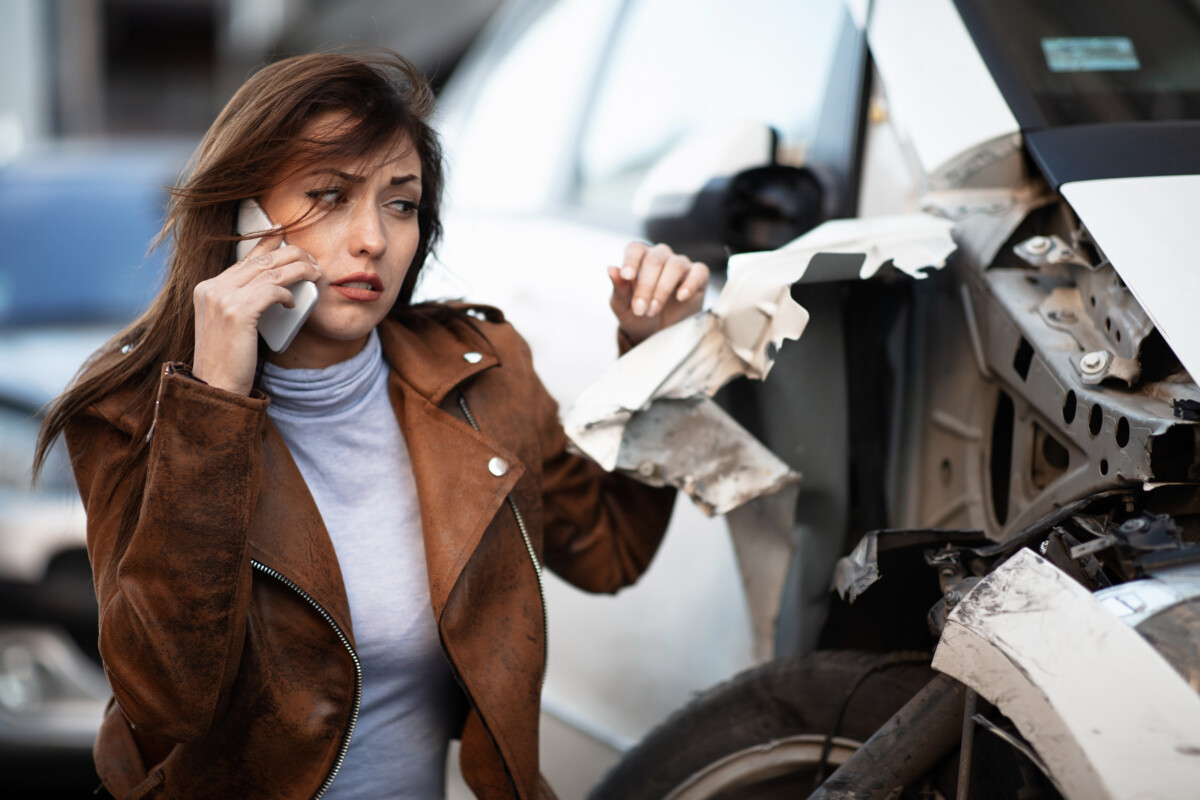Who Pays Medical Bills After a Car Accident 2026: Protect Yourself and Your Health

Understanding who pays medical bills after a car accident 2026 is essential for anyone involved in a collision. Medical expenses can accumulate rapidly, and knowing your responsibilities can ease some of the stress during this challenging time. This article explores the factors determining who is responsible for these costs, including insurance policies and state laws.
Understanding Medical Bill Responsibilities After a Car Accident in 2026
The Role of Insurance in Medical Bill Payments
Health Insurance
- Most health insurance plans cover medical expenses from a car accident, but you may need to pay a deductible or co-pay.
- Informing your health insurance provider about the accident is crucial for proper claims processing.
Auto Insurance
- Many states offer Personal Injury Protection (PIP) or Medical Payments (MedPay) coverage.
- PIP covers medical expenses regardless of fault, while MedPay typically covers only the policyholder and passengers.
- Understanding your auto insurance policy is key to knowing who pays medical bills after a car accident 2026.
State Laws and Their Impact
No-Fault States
- In no-fault states, your insurance pays for medical bills, regardless of fault, reducing litigation.
- As of 2026, there are 12 no-fault states in the U.S.
At-Fault States
- In at-fault states, the responsible driver is liable for medical expenses, leading to potential claims and negotiations.
Additional Considerations
Uninsured or Underinsured Motorists
- If the at-fault driver lacks insurance, you may rely on your own uninsured/underinsured motorist coverage.
Out-of-Pocket Expenses
- If insurance doesn’t cover all bills, you may need to pay out of pocket, so keeping detailed records is essential.
- The average cost of medical care after a car accident can exceed $30,000, highlighting the importance of understanding your coverage options.
Insurance Coverage and Its Role in Medical Bills
After a car accident, a key concern is who pays medical bills after a car accident 2026. Understanding this can greatly affect your financial recovery and peace of mind. With the complexities of insurance policies and state laws, knowing your coverage options is essential for navigating the aftermath of an accident.
Insurance is crucial in determining who pays for medical expenses after a car accident. The type of coverage you have can significantly influence your financial responsibility. Here’s a brief overview of different insurance types:
Types of Insurance Coverage
- Liability Insurance: Covers damages to others when you are at fault, typically paying their medical bills.
- Personal Injury Protection (PIP): Pays for your medical expenses regardless of fault, covering hospital bills and lost wages.
- Health Insurance: May cover some medical expenses post-accident, but you might still face deductibles and co-pays.
In no-fault states, PIP pays your medical bills up to a limit, regardless of fault. With about 12% of U.S. drivers uninsured, understanding your coverage is vital.
The Claims Process
- Report the Accident: Notify your insurance company promptly.
- File a Claim: Depending on your coverage, file with your or the other party’s insurance.
- Medical Documentation: Keep detailed records of treatments and expenses for your claim.
In 2026, streamlined claims processes can lead to quicker resolutions and payments for medical bills.
The Impact of No-Fault Insurance Laws on Medical Payments
Understanding who pays medical bills after a car accident 2026 is essential for anyone involved in a vehicular incident, as medical expenses can accumulate quickly. This section explores the impact of no-fault insurance laws on medical payments, clarifying how these regulations influence financial responsibilities after an accident.
No-fault insurance laws simplify the process of claiming medical expenses, as each party’s insurance covers their own bills, regardless of fault. This can lead to quicker and more efficient handling of medical payments.
How No-Fault Insurance Works
- Immediate Coverage: Medical bills are paid promptly, allowing injured parties to receive necessary treatment without delay.
- Limited Legal Action: Many no-fault states restrict individuals from suing for damages unless specific thresholds are met, reducing claim complexity.
In 2026, it’s vital to understand that no-fault insurance varies by state, affecting coverage limits and regulations on medical expenses.
Statistics on No-Fault Insurance
- Approximately 12 states in the U.S. have adopted no-fault insurance laws.
- States with no-fault laws generally report lower average medical costs per claim compared to traditional liability states.
These insights emphasize the benefits of no-fault insurance in managing medical expenses after a car accident, enabling individuals to make informed decisions about their coverage.
How Liability Determines Who Pays Medical Bills
Understanding who pays medical bills after a car accident in 2026 is essential for anyone involved in a collision, as medical expenses can escalate quickly. Knowing how liability is determined helps navigate the financial aftermath of an accident. This section outlines key factors influencing responsibility for medical costs.
Liability is crucial in determining who covers medical bills after a car accident. Here are some important points:
1. Fault Determination
Typically, the driver at fault is responsible for medical bills, established through:
- Police reports
- Eyewitness accounts
- Insurance investigations
Understanding fault impacts your financial obligations post-accident.
2. Insurance Coverage
Your insurance type affects who pays medical bills. Common coverages include:
- Liability Insurance: Covers damages if you are at fault.
- Personal Injury Protection (PIP): Covers your medical expenses regardless of fault.
- Uninsured/Underinsured Motorist Coverage: Protects you if the at-fault driver is underinsured.
3. State Laws
State laws vary on liability and medical payments. For instance:
- No-Fault States: Require PIP insurance for medical bills.
- At-Fault States: The at-fault driver’s insurance pays for the other party’s expenses.
With nearly 30% of U.S. drivers uninsured, understanding these factors is vital for managing financial implications after an accident.
Out-of-Pocket Expenses: What You Need to Know
Understanding who pays medical bills after a car accident in 2026 is essential for anyone involved in a vehicular incident. Medical expenses can accumulate rapidly, and knowing your options can ease the financial burden that follows an accident. This section focuses on out-of-pocket expenses and what you need to know to navigate this situation effectively.
Several factors influence out-of-pocket expenses after a car accident. Here are key points to consider:
Insurance Coverage
- Health Insurance: May cover some medical bills, but deductibles and co-pays may still apply.
- Auto Insurance: Your policy might cover medical expenses through Personal Injury Protection (PIP) or Medical Payments (MedPay).
- Liability Insurance: If the other driver is at fault, their liability insurance may cover your expenses, though this can take time.
Types of Medical Expenses
- Emergency Care: Includes ambulance rides and immediate treatment.
- Follow-Up Treatments: May involve physical therapy or specialist visits.
- Long-Term Care: Severe cases might require ongoing rehabilitation or home care, increasing costs significantly.
Statistics to Consider
- The average medical care cost for car accident injuries can exceed $57,000.
- Nearly 50% of accident victims face out-of-pocket expenses despite insurance payouts.
- 1 in 3 accident victims may incur medical bills that exceed their insurance coverage limits, highlighting the importance of understanding who pays medical bills after a car accident in 2026.
Navigating Medical Bills When Multiple Parties Are Involved
Understanding who pays medical bills after a car accident 2026 is essential for anyone involved in a collision, as medical expenses can accumulate quickly. This section explores how to navigate medical bills when multiple parties are involved, clarifying your options and responsibilities.
In accidents with multiple parties, determining who pays medical bills can be complex, influenced by insurance policies, fault, and state laws. Here’s a breakdown of key considerations:
Understanding Fault
- Fault is crucial in determining responsibility for medical bills. If you are at fault, your insurance may cover the other party’s expenses; if not, their insurance should cover yours.
- In no-fault states, each party’s insurance pays for their medical expenses, while in tort states, the at-fault party’s insurance is liable for damages, including medical bills.
Insurance Coverage
- Review your insurance for medical payment coverage (MedPay) or personal injury protection (PIP), which can provide immediate relief regardless of fault.
- Keep detailed records of communications and bills when dealing with multiple insurance companies to ensure a smooth claims process.
Negotiating with Insurance Companies
- Be ready to negotiate with insurance adjusters and document all medical expenses to support your claims. If negotiations become complicated, consider consulting a personal injury attorney for guidance.
FAQs: Who Pays Medical Bills After a Car Accident 2026
1. Who is usually responsible for paying medical bills after a car accident?
Typically, the at-fault driver’s auto insurance covers the injured party’s medical expenses.
2. What if the accident was partially my fault?
Some states follow comparative fault rules, which may reduce the amount you can recover based on your share of responsibility.
3. Can my health insurance cover my bills?
Yes, your health insurance can pay upfront if the other driver’s insurance is delayed or insufficient. You may need to repay them later if you win a settlement.
4. What role does car insurance play?
Your auto insurance may include personal injury protection (PIP) or medical payments coverage, which can help cover medical bills regardless of who caused the accident.
5. How can I make sure my medical bills are paid?
Document all injuries and treatment, report the accident promptly, and coordinate between auto insurance, health insurance, and any legal claims.
Final Thoughts
After a car accident, determining who pays medical bills can be complicated, involving both auto and health insurance. Knowing your coverage options and acting quickly ensures your bills are handled while protecting your financial and legal rights. Staying informed and organized is key to avoiding surprises in 2026 and beyond.
Take the first step toward justice. Get your free case evaluation now at LegalCaseReview.com or call 📞 (833) 279-1850!


